I took the opportunity of SANER book release to ask him a few questions.
All the illustrations come from the Saner book printed by Belio for their Die Young collection.

>Who is Saner ? Quien es saner?
Saner es un loco dentro de un mundo de extraños.
Saner is a a crazy person in a world of strangers.
>How did you came to graffiti ?
A través de mi hermano y mis amigos, en los años 97-98, viendo la calle pintada por crews de ese momento, Los CHK, SF y A. Inicié pintando con otro seudónimo y con pausas necesarias para replantear un estilo propio. Dejé de pintar graffiti durante cuatro años, pero en 2004 volví a esta forma de expresión para buscar un estilo personal.
Through my brother and my friends, in the years 97 and 98, looking at the streets painted by the current crews, CHK, SF and A. At the beginning I painted with another nickname and with the necessary pauses so I could have my own style, then I stopped painting graffiti by 4 years but in 2004 I returned to this mode of expression looking for a personal style.
>You’re a member of two notorious crews from Mexico: DSR & Eyos crew. Do you enjoy painting with other people?
Es interesante compartir experiencias con personas que no son de tu crew. Pienso que trabajar un lienzo o un muro con otras personas, generalmente alejadas de tu cotidianidad y sobre todo de tu estilo, siempre te permite crecer como artista.
It is interesting to share experiences with people outside of your crew. I believe that working on a canvas or a wall with people who are generally apart of your everyday life but most of all away from your style, always allows you to grow as an artist.
>From Europe, Mexico seems to be a quite violent place with kidnapping and drug relative crimes. Is Mexico an easy place to paint in the streets ?
De México, se sabe que es un país violento. Pero para pintar, creo que es un lugar tranquilo. Y aunque tiene sus riesgos, como en todas partes, depende del sitio que se elija.
Everybody knows that Mexico is a violent country. But for painting, I think that it is a quiet place. And even if there are so many risks, like everywhere, it depends on the chosen place to paint.
>Belio invited you in Madrid to work on the book. What surprised you the most in the spanish graffiti/street scene ?
Ahí encontré no sólo estilos artísticos distintos, sino cosmovisiones diferentes. La forma de concebir la vida y el mundo de alguna manera es distinta. La verdad, me agradó mucho ser bien recibido por la escena local. Artistas como Besdo, Gore, Alberto de Pedro, Kafre, Aryz, Grito, Fefe and remed, Zosen, Skount, Escif y compañía me trataron muy bien y también recibieron con mucho afecto mi arte.
There, I found not only diferent artistic styles, but different world views. The way that we conceive life and world is somehow different. The truth is that I liked so much to be well received by the local scene. Artists like Besdo, Gore, Alberto de Pedro, Kafre, Aryz, Grito, Fefe and remed, Zosen, Skount, Escif and friends treated me so well and they also received my art with affection.
>We know the Lucha libre mexicana masks (mexican catch) and Maya masks. Why do your characters almost always wear a mask ?
Las máscaras que uso son tradicionales en México. Los jaguares, coyotes, calaveras y demás personajes recurrentes aparecen en mi trabajo porque ese mundo paralelo es su verdadero yo, su rostro real. Pienso que al dejar de lado la máscara no somos nada.
The masks that I use are traditional masks in Mexico. The jaguars, coyotes, skulls and other recurrent characters appears in my work because that parallel world is the real self, the real face. I think that if we disregard the mask we are nothing.
>What are your main influences (in the art world and in the graffiti scene)?
Mis influencias son mis padres, hermanos y amigos. Sin duda alguna, en ese marco referencial es muy importante para mi obra el movimiento muralista mexicano: Siqueiros, Orozco, Rivera.
My influences are my parents, brothers and friends. Without any doubt, in this frame of reference it is very important for my work the Mexican Muralist Movement: Siqueiros, Orozco, Rivera.
>Could you tell us which were the last records you played at home?
Últimamente he estado escuchando Nach Scratch, The Tiger Lillies, At The Drive In y el podcast de XRL8R.
Lately, I’ve been listening to Nach Scratch, The Tiger Lillies, At the Drive In and XRL8R podcast.
>If I visited Mexico DC, which are the places I shouldn’t miss ?
Primero, llegar al Zócalo capitalino, que es el mero corazón de México (la catedral, la zona arqueológica). Luego comer en un puesto de quesadillas o tacos; visitar los museos de la zona: San Ildefonso, Munal, Antropología, Arte Moderno; también, ir al bosque de Chapultepec (es el zoológico más importante del país). Si tienes tiempo, ve a las trajineras en Xochimilco. Y, lo más importante, visita las pirámides de Teotihuacán.
First of all, you must go to the Zocalo, which is Mexico’s city heart (the Cathedral, the archaeological zone). Then you should go and eat in a quesadilla and taco’s stand; visit the museums around: San Ildefonso, MUNAL, the National Anthropology Museum, the Modern Art Museum; also you should go to the Chapultepec Forest (the most important zoo in Mexico). If you have any time left, go to ride a “trajinera” (a colorful boat) in Xochimilco. And the most important is to visit the pyramids at Teotihuacán.
and a last word ?
Thanks to Belio Team (Javier and Pablo), for all the support and the good moment that we have shared.
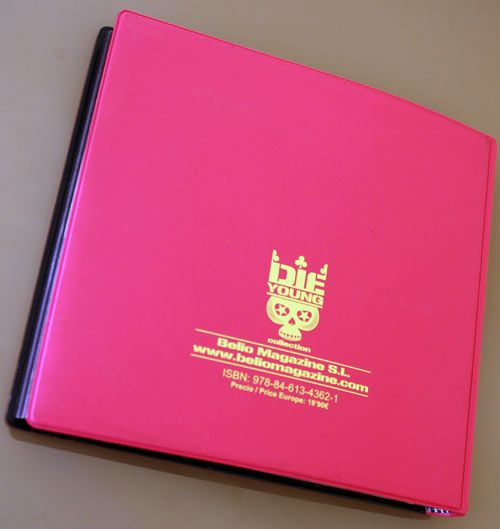
DY008: SANER
Die Young Collection
145 x 150 mm – 192 pages
ISBN: 978-84-613-4362-1
——
Saner blog
Saner photo gallery
——-

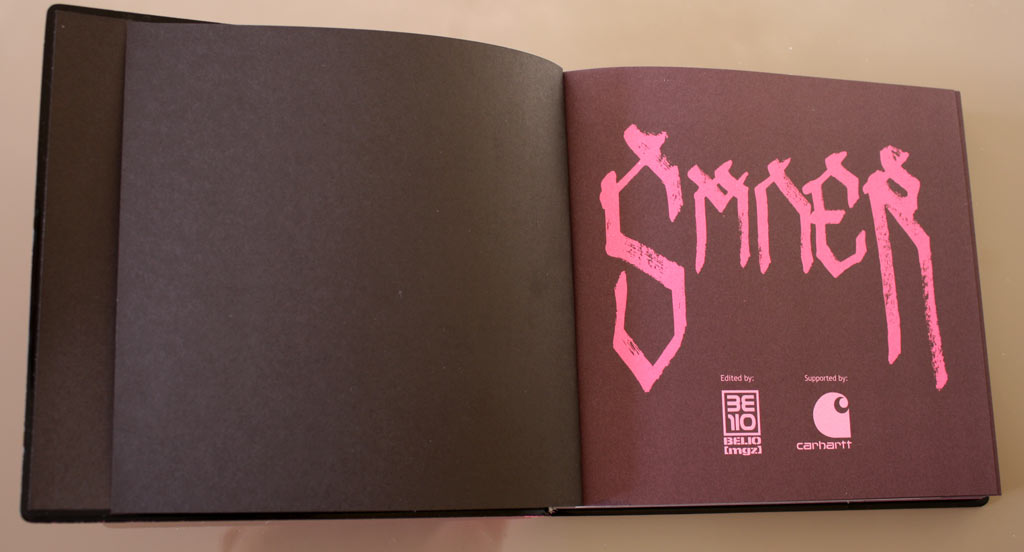
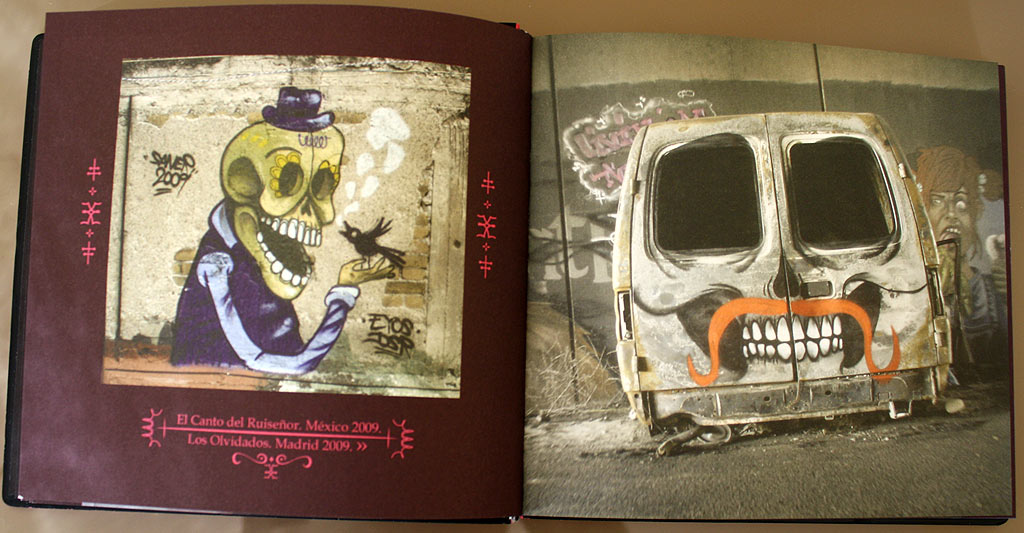


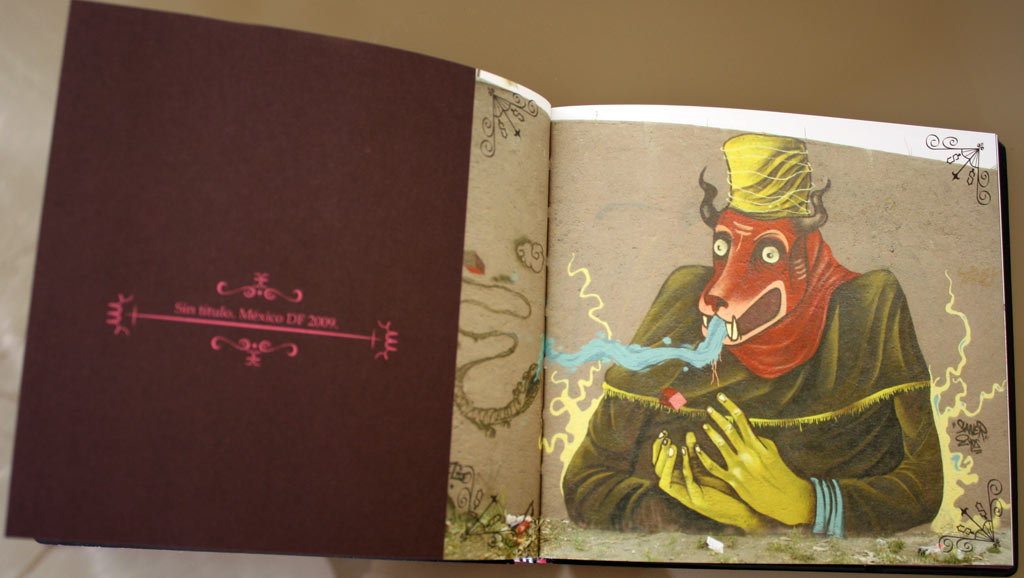
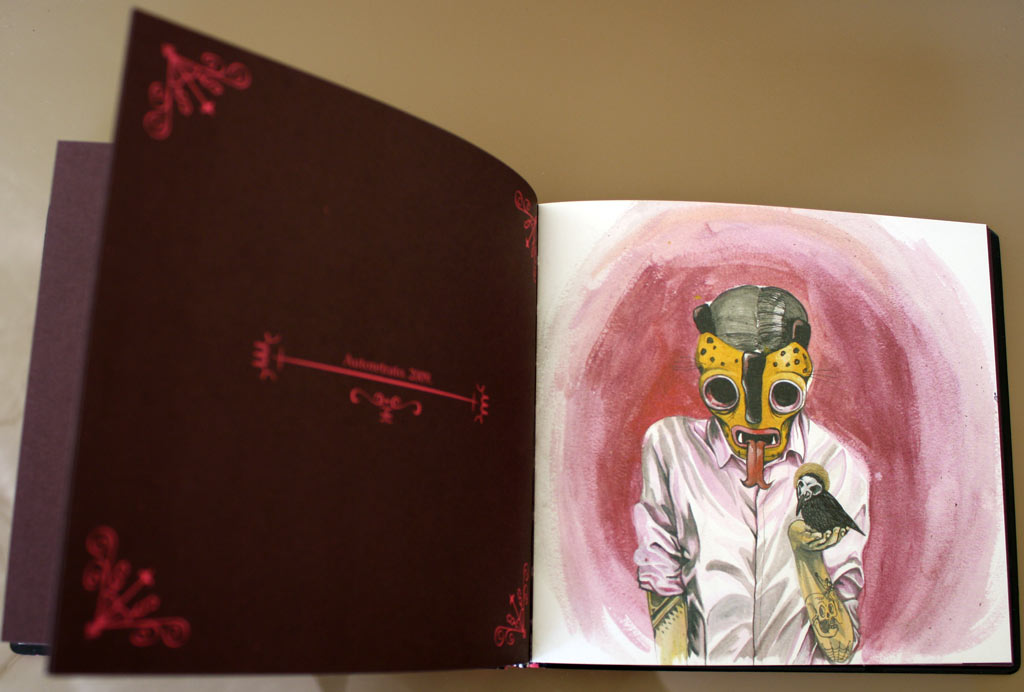
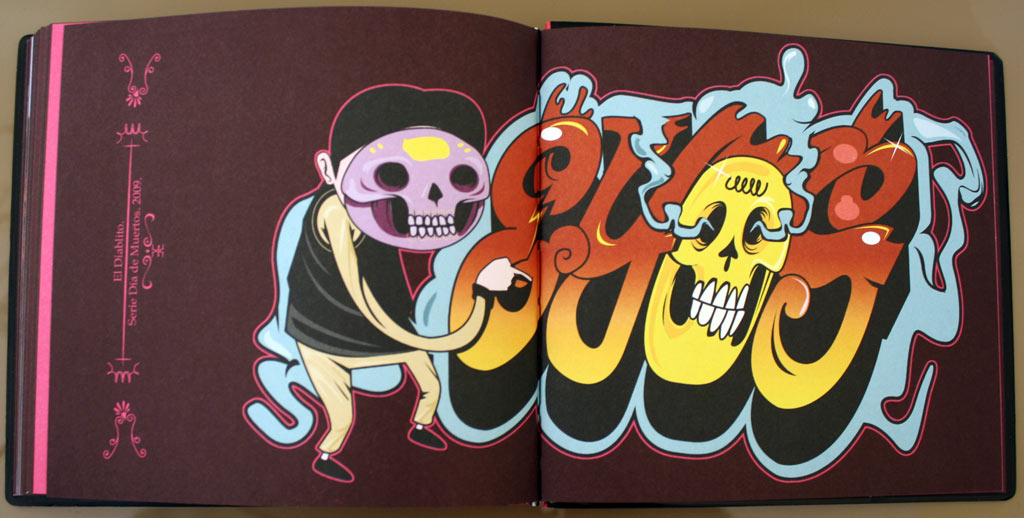
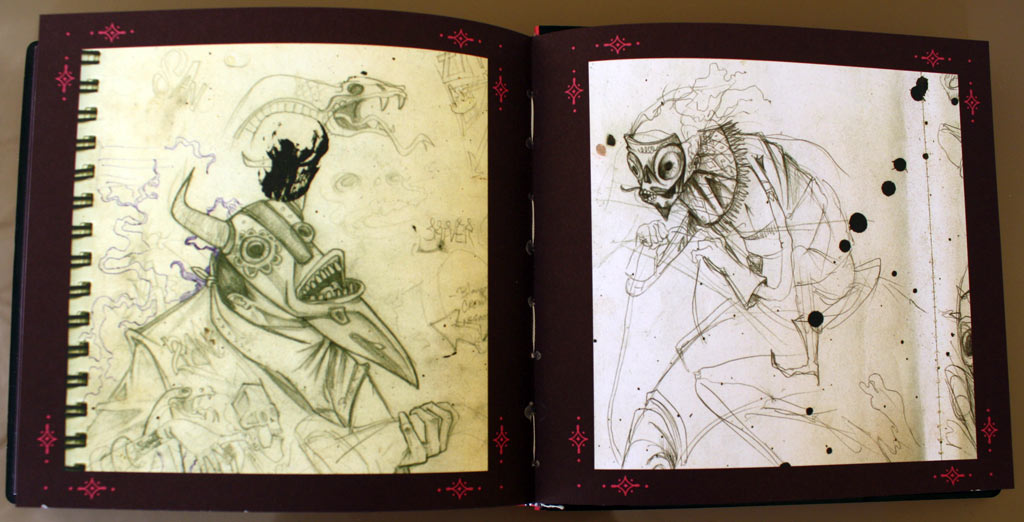
campeón.
He-hhe !
Funny malicious !
El mismo rey de la oscuridad en un Precioso y compacto libro , orgullo mexicano que lleva el estandarte de los mejores!!!
una abrazo saner
WEAGHHHHH
felicidades saner! otro pedo tus jales!
sorry! these guy at least instead of “But for painting, I think that it is a quiet place. And even if there are so many risks, like everywhere, it depends on the chosen place to paint” he sould say that he is just paing on public events and in legal walls and he is just a illustrator because these make more sens with the stuff he does in mexico city he doesn’t have street cred in the city he and almost all the street artist in the city are just making this shit it’s sad but true he’s art that supose to be in the streest it’s not, and also saner must stop watching and coping stuff like Wendell Mc Shine’s art, no comparison with real artist like os gemeos or honet or sonik that their art is in the street and original. sorry saner but this is true.
felicitaciones al por mayor . . . .
pure style
En hora bueno colega, felicidades, un pequeño suspiro por ese gran esfuerzo, lo mejor para ti!
un abraazo.
kidghe.
just got it!! really nice work from saner